Amy McPherson explores Italy’s oldest national park, Gran Paradiso National Park, and finds adventure, history and wildlife
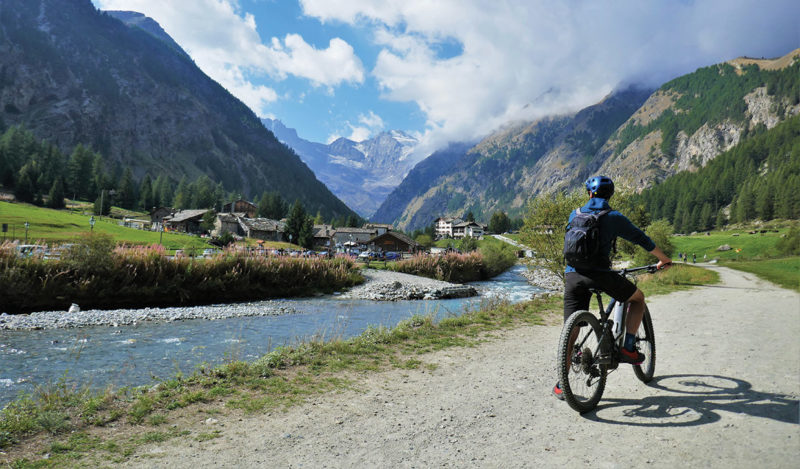
Words by Amy McPherson
A high-pitched whistle penetrates the cool mountain air as I slowly ascend the slopes on a hiking path that was once part of King Victor Emmanuel II’s network of hunting trails.
The whistle, I am told, is a marmot’s warning of intruders.
It sounds like Morse code – short dashed whistles for ground alert, one long sustained note for a possible air strike.
I squint my eyes towards the sound but see no movement.
With such a sophisticated alarm system, it is no wonder marmots are difficult to spot. However, there is another mountain animal I have come to see: the Alpine ibex.
The King came here to hunt the prized ibex, a species of wild mountain goat characterised by its bold and sturdy horns.
But by the end of the 19th century, wildlife populations all around the European Alps were in such decline that they faced extinction, especially the ibex, so King Victor Emmanuel III donated the hunting reserve to the Italian state in 1920 to create a protected area for the ibex.
The Gran Paradiso National Park officially opened in 1922 and it celebrated its centenary in 2022.
Straddling Piemonte and Valle d’Aosta, the national park is 173,000 acres of glacier-capped peaks and lush green valleys.
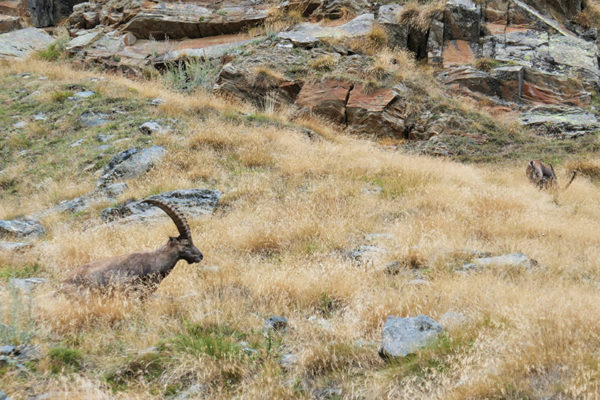
When the ibex population had disappeared everywhere else in Europe but here, it was the Gran Paradiso National Park that reintroduced it to the French and Swiss Alps.
Locals like to remind you that it was the Gran Paradiso National Park that saved Europe’s ibex.
Visiting Gran Paradiso National Park from the Cogne Valley
To be up close and personal with Gran Paradiso and the national park, I had based myself in Cogne, a town perfectly situated within walking distance of the border of the park.
“Actually, the border is right there,” said Laura Roullet, the fourth-generation owner of Bellevue Hotel & Spa, gracefully pointing to an invisible line across base of the mountains.
Cogne born and raised, she has travelled the world only to discover that her heart lies where she grew up.
On the map, the hotel is the only structure located on what’s now a protected meadow, an extension of the nature reserve from the national park, and it allows guests an unobstructed view across the valley.
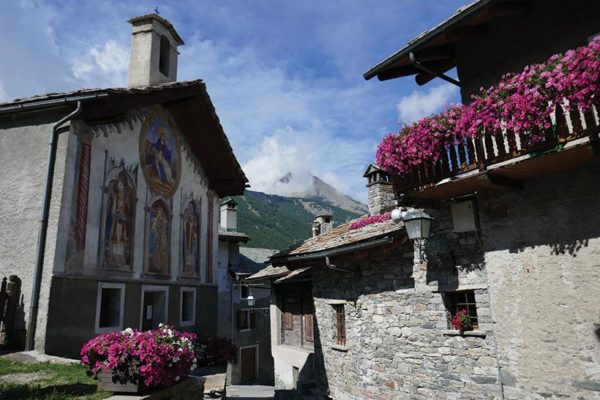
“When my family built this hotel, the mayor knew more and more people would want to build around us to get the business,” Laura explained.
“To protect the natural beauty of what you see today, he declared this whole flatland to be a protected area, even if it doesn’t fall within the national park reserves.”
While winter sport is obviously popular in the mountains, one of the best ways to get around the valleys around Cogne in the summer months is to get on an electric mountain bike.
My guide, Lorenzo Mineo, led me through trails that followed the valley floor alongside crystal clear rivers gushing down from glaciers or natural springs.
A quick visit to Lillaz waterfalls, then in and out of woodlands dotted with small farmers’ huts and through villages with traditional Aosta architecture of stone foundations and hardwood uppers.
There is something very exhilarating about being on an e-bike. Specifically an e-mountain bike, where you can roll up a steep hill and over rocky paths without expending too much effort.
It allowed me to focus more on my surroundings.
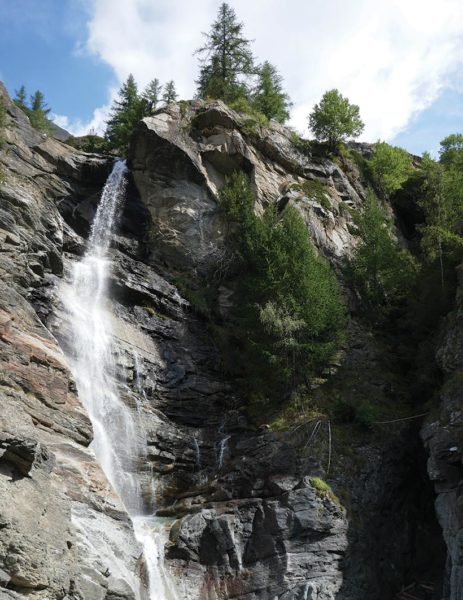
“I love it here,” said Lorenzo while we stopped to take a breath on a lookout just above the village of Gimillan.
Originally from neighbouring Piemonte, he moved here with his girlfriend and has never looked back.
“This is my playground. I am not sure anyone would complain!” he exclaimed with a sweep of his arm towards the view.
I nodded in agreement. From this point, we looked directly into the face of Gran Paradiso, the only mountain massif that rises entirely within Italy.
To its right is the King of the Alps, Monte Bianco (Mont Blanc) and behind us are the other giants: Monte Rosa and Monte Cervino (The Matterhorn).
Europe’s highest mines
Natural wonders aren’t the only things that Cogne is famous for.
Two thousand metres above the town, on the face of Monte Creya, is the remains of one of Europe’s highest mines.
Mining activities are believed to have begun during the Roman era. Between the 18th and 19th centuries, mining was the main source of income for the region.
Communities were built around the mines, complete with schools and hospitals for the families of the miners.
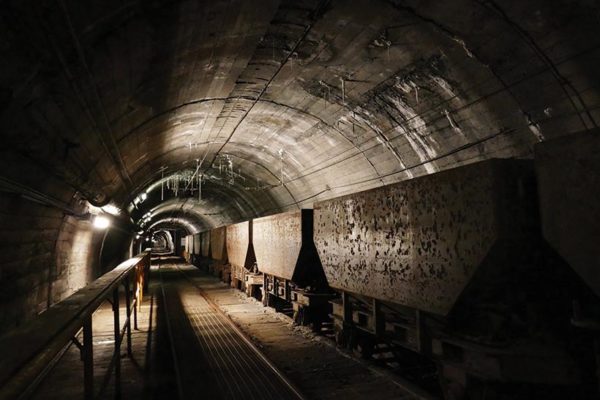
Eventually, mining became too expensive and the Cogne mines closed permanently in 1979.
Today they are a living museum for visitors to learn more about the heritage of this mountain territory.
Access to the mines is by foot via a dedicated hiking trail.
Following my guide Stefano Tranelli’s footsteps, we marched up the slopes through light pine forests, occasionally stepping over reminders of the mining past – the disused railway used to transport minerals down to the valley, a discarded metal wheel, towers that were part of the cable car for workers, and stone foundations that were used for storage points.
Arriving at the mines, a guided tour took us deep into a part of the 100km network of tunnels where workers spent their days mining for magnetite.
First a train ride, then on foot to explore some of the tools and machinery used as part of the job – at the same time personally experiencing the disorientating sensation of staying so long in darkness.
Accompanying us was Italo, a gentleman with an animated air of conversation who had worked in the mines during the last years of their operation.
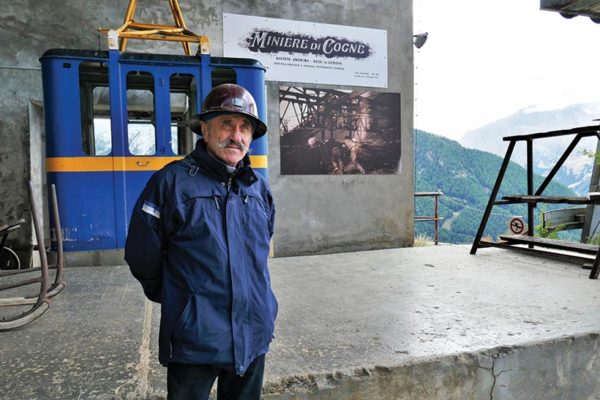
“Oh, the parties we used to have!” He cheerfully recounted stories of the days.
“But it is hard work, and dangerous. Once my friend and I decided to take a lunch break two minutes earlier than we should have, and when we returned, we found the exact spot where we worked had collapsed just a minute after we left it.”
Moral of the story? “Never be afraid to leave for an early lunch,” he laughed.
Fontina Val D’Aosta, pride of the valley
It is common knowledge that every region in Italy has a cheese it worships, and in Aosta Valley, the Fontina Val d’Aosta takes the podium of the prized D.O.P. label.
The making of this cheese dates back to the 12th century, and for a Fontina cheese to be branded with the authentic blue Fontina Val d’Aosta stamp on the wheel, it must be made within strict traditional practices – that includes using only milk from the mountains of Aosta and being aged in a cave that maintains the right temperature and humidity.
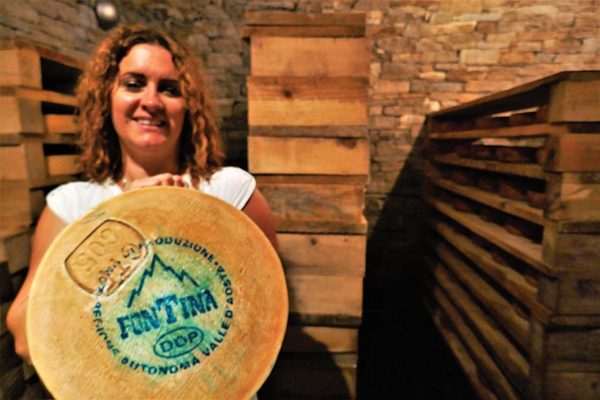
“It is getting more difficult to produce, unfortunately,” said Marta, a farmer who had set up her dairy farm on the mountain slopes of Cogne in 2013.
“In the beginning , this cave would naturally be perfect. The right temperature and the right humidity,” she continued as she showed me the different types of cheeses aging on layered wooden pallets in her cave.
“But about two years ago, I had to install air conditioning and a humidifier in order to maintain the right conditions here. It’s getting more expensive to produce cheese.”
Looking around her cave, with all the various equipment attempting to reverse the changing conditions caused by climate change, I felt for her and the many farmers around the world.
Gran Paradiso National Park: The grand paradise of wildlife
Back on the hiking trails of the Gran Paradiso National Park, I continued to scan the horizon for signs of the Alpine wildlife.
Having given up on the sighting of a marmot, I strained my eyes to look out for a horn as we continued the hike up to Rifugio Vittorio Sella, once the King’s hunting lodge, now a refuelling and sleeping refuge for hikers.
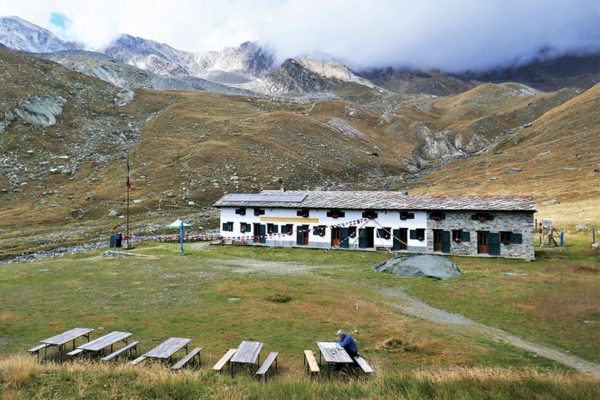
Slowly, we emerge from a forest of pines, firs and larches to reach the altitude where the tree line ends. I am told that the higher we climb, the better the chances of seeing these majestic animals.
“There! There!” My hiking guide Nicoletta grabbed at my shoulders and pointed to a ledge just above our heads.
On cue, two large horns appeared, followed by a pair of dark, alert eyes that looked directly into mine.Two ibex slowly grazed on the grass between the rocky terrain.
This was it. I had seen the symbol of this national park with my own eyes.
Against the backdrop of melting glaciers, I know for a fact that at least wildlife is returning to the region.
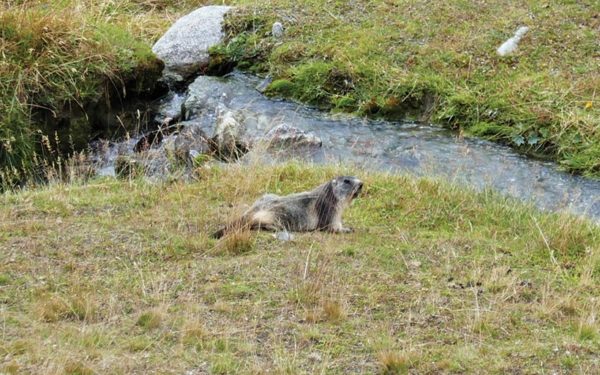
“It’s not just the ibex and the chamois and the marmots,” Nicoletta said during our lunch stop at the Rifugio.
“Actually, just like we re-introduced the ibex to France and Switzerland, we’ve also seen a return of other wildlife that wasn’t here before from there. Wolves for example, golden eagles and the griffon vulture. Life is being restored!”
On our descending return, I take one last look of the mountains. I want to keep this place a secret, to allow it to continue to regenerate so that the glaciers, the vegetation, the wildlife can continue to shine.
Then, just as I averted my eyes one last time towards the mountains, a furry movement caught my attention on the riverbed below.
Could it be? In my final moments, a marmot has finally graced me with an appearance.
As clichéd as it sounds, I really do leave Gran Paradiso National Park with a smile and a wish to return.
Interested in seeing more of this area? Read the blog: 48 hours in Aosta
